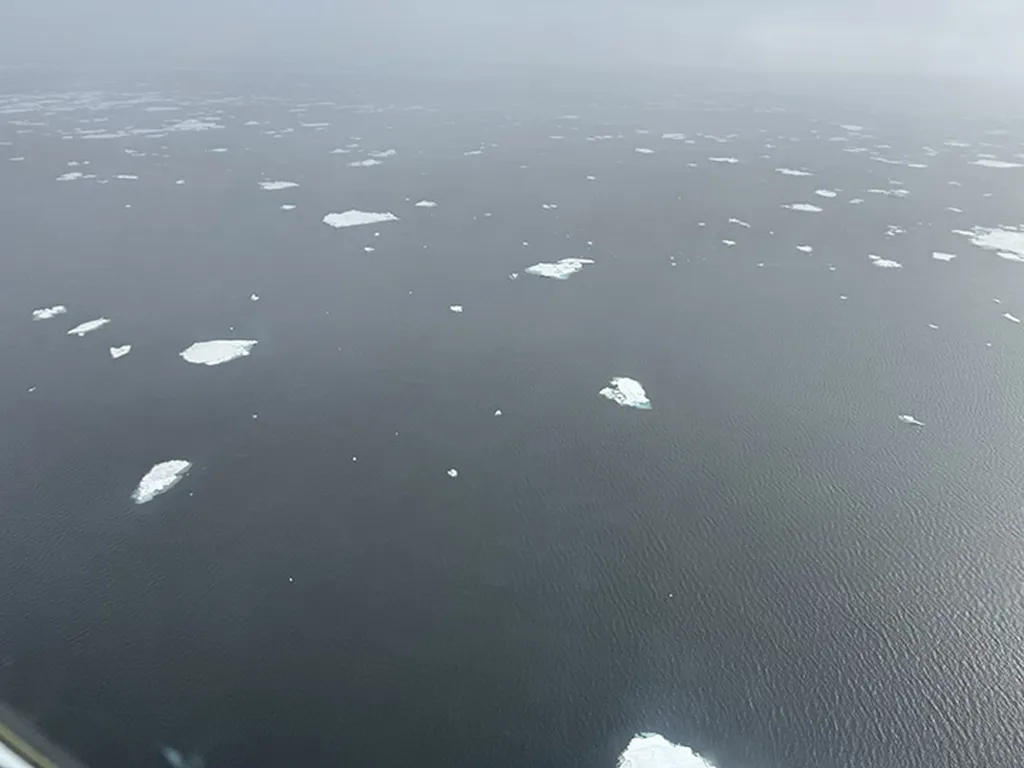The rapid melting of the Greenland ice sheet is not only altering the Arctic landscape but also significantly impacting marine ecosystems and, consequently, the broader environment and agriculture sector. A recent study published in Nature Communications: Earth & Environment has revealed that meltwater flowing from the Greenland ice sheet is stirring up nutrients from the ocean depths, fueling algal blooms that form the base of the Arctic food chain.
As Greenland’s ice melts, fresh water trickles down through the ice and flows out to sea. This fresh water, being lighter than saltwater, tumbles down hundreds of feet and then rises to the surface, drawing up iron and nitrate from the depths. These nutrients fuel the growth of algae, which are crucial for the Arctic marine food web. Prior research has shown that halibut, a commercially important fish species, are more abundant in fjords fed by meltwater.
The largest outlet for meltwater lies beneath Jakobshavn Glacier, which dispenses more than 300,000 gallons a second at the height of summer. Scientists modeled the flow of fresh water from Jakobshavn Glacier using over three decades of data on temperature, pressure, and salinity. They found that melting is boosting the summertime growth of algae by between 15 and 40 percent.
The implications of this study extend beyond marine ecosystems. The agriculture sector, particularly aquaculture, could see both opportunities and challenges. The increased abundance of fish species like halibut in meltwater-fed fjords could enhance fisheries and aquaculture production. However, the dilution of ocean water due to melting ice, which reduces its ability to absorb carbon dioxide, could have broader environmental impacts that indirectly affect agriculture.
For investors, the study highlights the potential for growth in Arctic aquaculture and fisheries, but also underscores the need for careful consideration of environmental impacts. The increased algal blooms, while beneficial for marine life, could also lead to more frequent and severe harmful algal blooms (HABs), which can be detrimental to both marine ecosystems and human health. This could pose risks for investors in the seafood industry and those involved in coastal tourism and recreation.
Furthermore, the study’s findings on the reduced ability of ocean water to absorb carbon dioxide due to dilution by meltwater highlight the complex interplay between climate change and marine ecosystems. This could have broader implications for global climate policies and the agriculture sector’s role in carbon sequestration and mitigation efforts.
In summary, the study provides valuable insights into the complex dynamics of Arctic marine ecosystems and their response to climate change. For the agriculture sector and investors, it underscores the need for a nuanced understanding of these changes and the development of adaptive strategies to navigate the opportunities and challenges they present.

